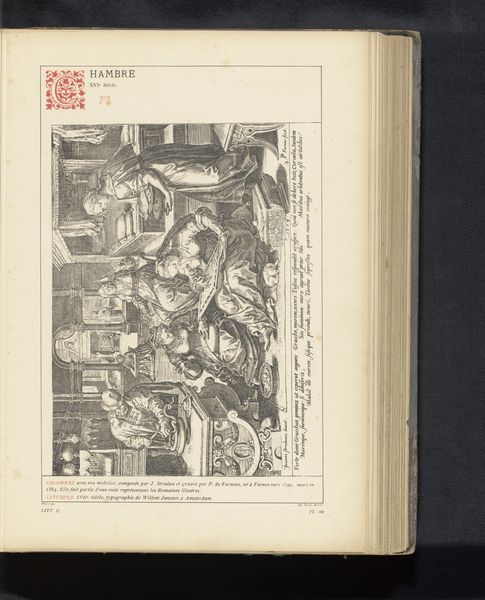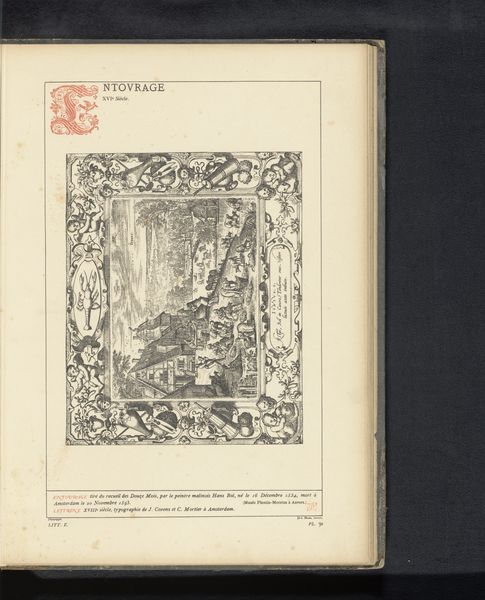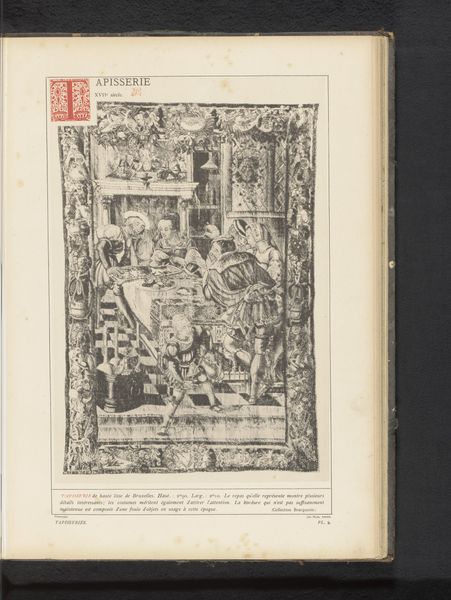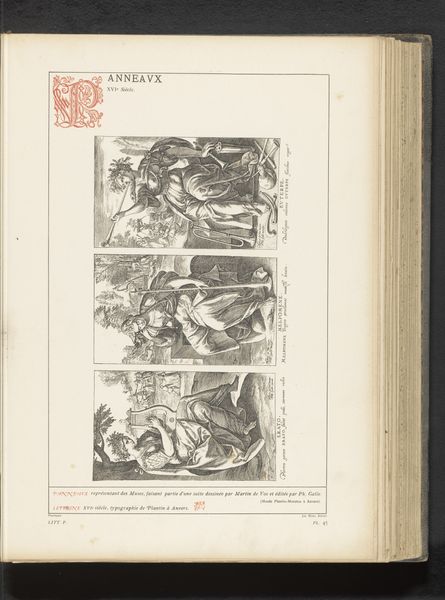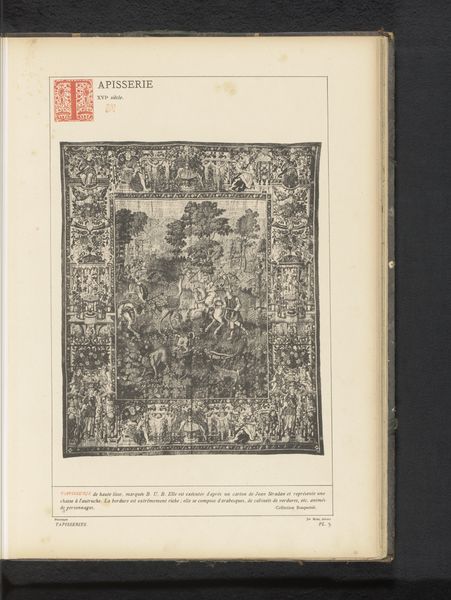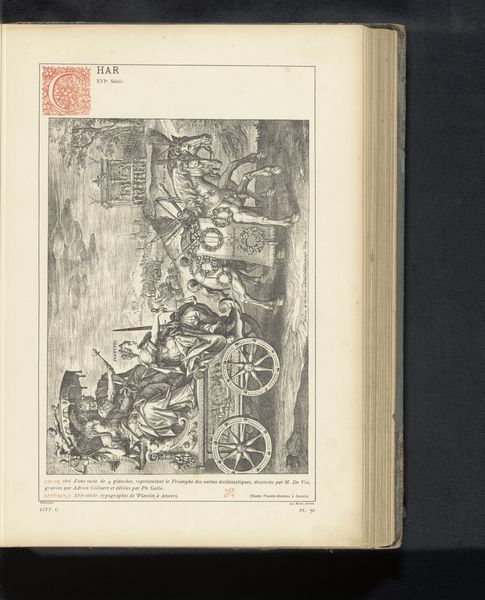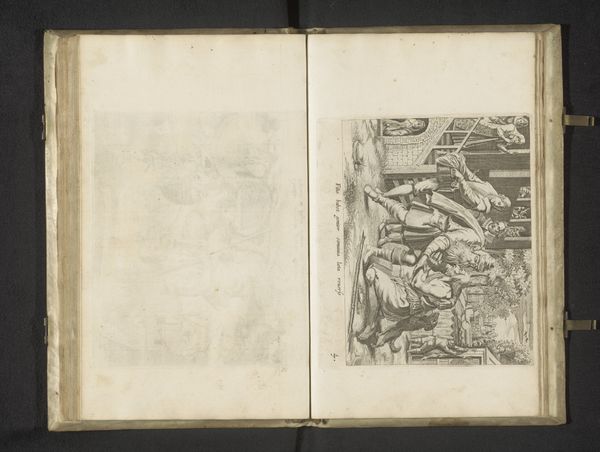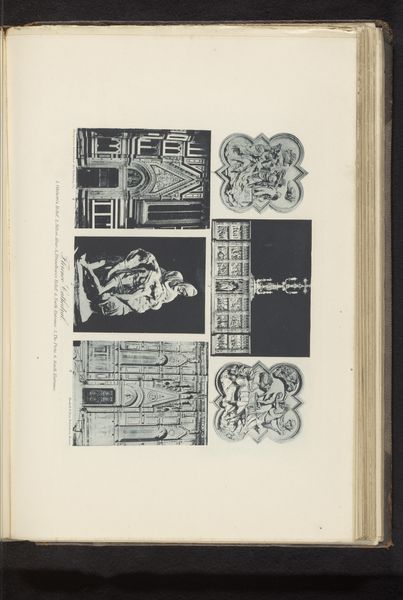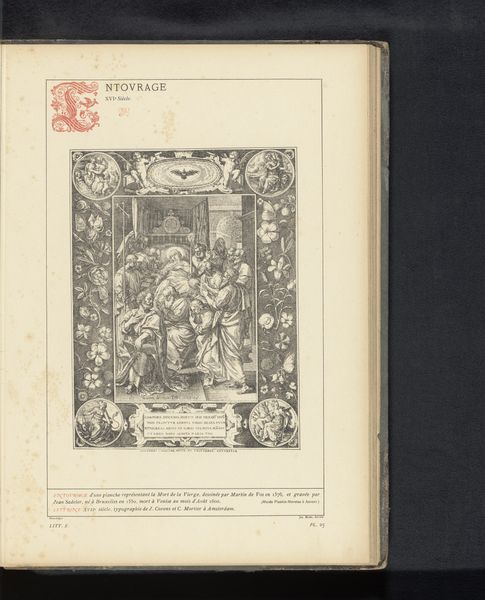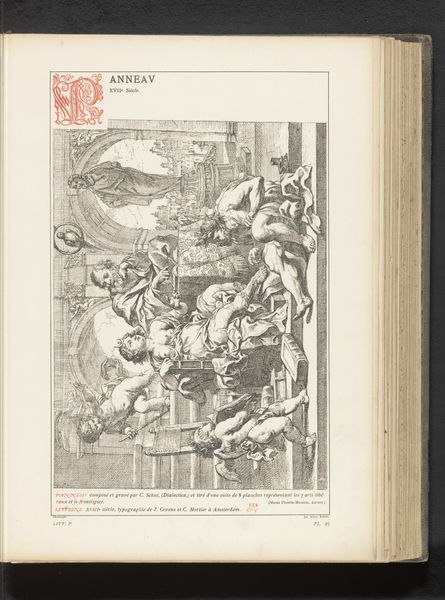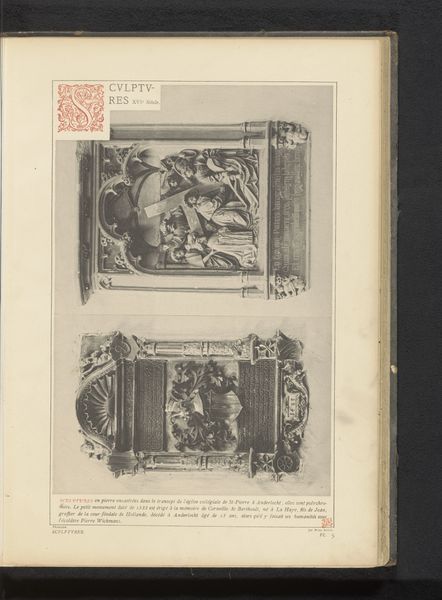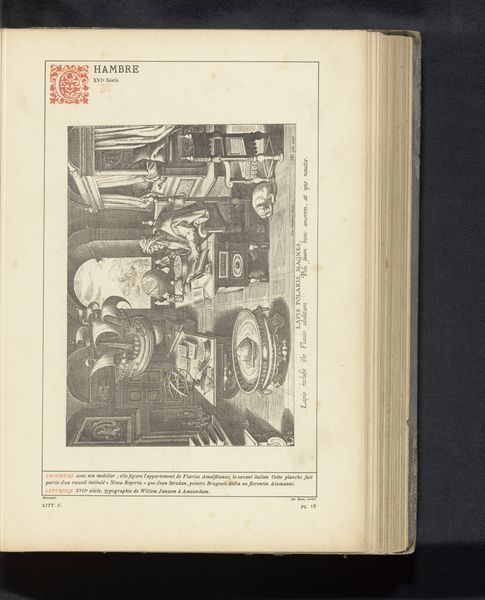
Reproductie van een prent van een rijke man op zijn sterfbed door Crispijn van de Passe naar Maerten de Vos before 1880
0:00
0:00
Dimensions: height 341 mm, width 230 mm
Copyright: Rijks Museum: Open Domain
Curator: Here we have an engraving, predating 1880, titled "Reproductie van een prent van een rijke man op zijn sterfbed door Crispijn van de Passe naar Maerten de Vos". Editor: The chaotic scene really strikes me. It's almost oppressive—like a visual representation of societal decay with dark undertones of inequity. The artist makes sure to display some level of baroque drama using pronounced diagonals that lend urgency and energy to this piece. Curator: Formally, the composition, with its complex arrangement of figures, speaks volumes about the artistic conventions of the Baroque era, including the dynamism, heightened emotionalism, and emphasis on depth. Notice the details achieved through varied lines, capturing texture and creating visual interest in the architectural components. Editor: And, indeed, this work is far from detached. Its historical context points toward examining power structures, especially socio-economic divides, as it appears to illustrate the death of a rich man, perhaps inviting critical perspectives about societal ethics and human inequalities of the era. Curator: Through the intricate rendering of lines, shapes, forms, and patterns, we are presented with a work that adheres to principles like proportion, symmetry, and balance while emphasizing directional forces, establishing points of focus, and exploring contrasting tones within the frame. Editor: Looking closely, this imagery underscores issues that still challenge us today. Art historical conventions interweave with present day struggles: Who holds power, who is dying, and what does legacy even mean when fundamental values are skewed? Curator: That is the marvel of engravings: an ability to compress layers of expression within constrained aesthetic parameters—its formal complexity serving a clear narrative purpose. Editor: The stark imagery asks uncomfortable questions that society perpetually struggles with and seems as vital now as back then, prompting continuous dialogue around pressing political matters. Curator: Yes, seeing it from this viewpoint encourages us to contemplate technical excellence and cultural symbolism at work within this period artifact. Editor: And I must add, how profoundly history echoes when reflected in our own present concerns, allowing works from the past to still shape current sociopolitical ideas.
Comments
No comments
Be the first to comment and join the conversation on the ultimate creative platform.
